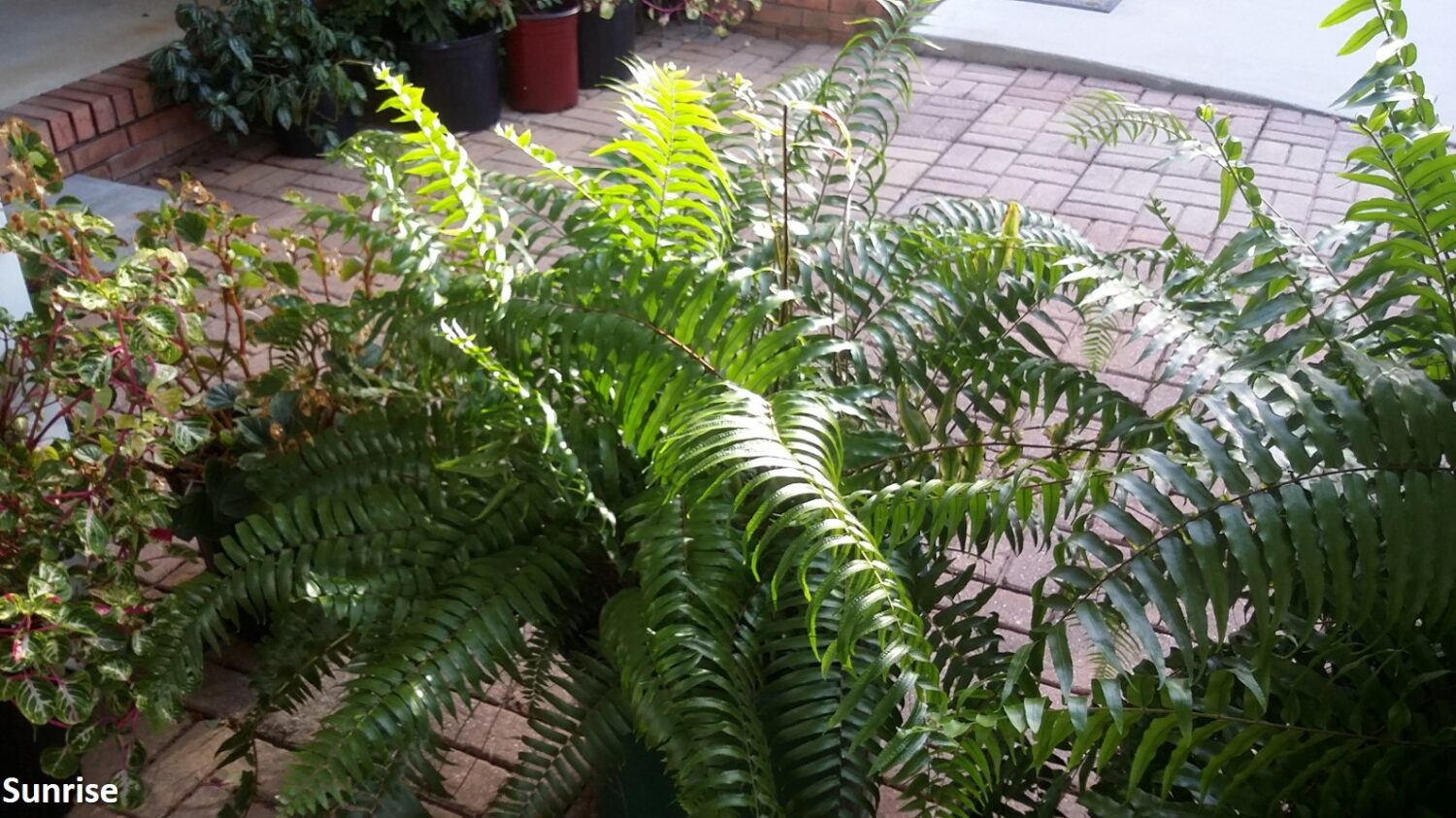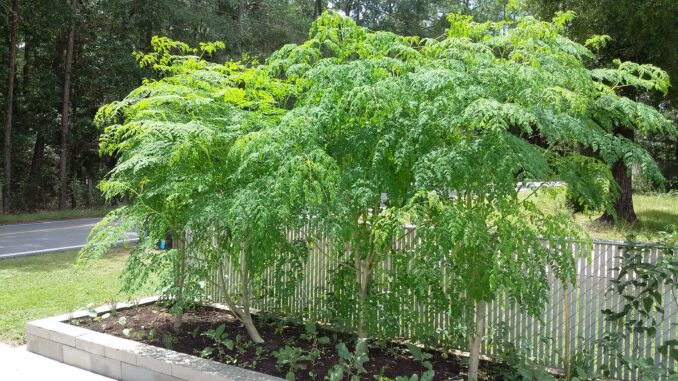

After six years of experience in the 8B coastal zone, we’ve developed a list of the 20 easiest food plants to grow in the garden:
1. Moringa Oleifera (Malunggay)
2. Bitter melon (Ampalaya)
3. Bok Choy (Pechay) lettuce/spinach substitute
4. Chicago Hardy figs
5. Cilantro
6. Garlic chives
7. Green onions
8. Hot peppers
9. Jute (Saluyot)
10. Long beans
11. Malabar spinach (Alugbati)
12. Parsley
13. Longevity Spinach (Gynura Procumbens)
14. Purslane
15. River spinach (Kangkong)
16. Romaine lettuce
17. Spinach
18. Sweet potatoes (orange and purple)
19. Turmeric
20. Yellow cherry heirloom tomatoes
1. Moringa Oleifera
Description
Without doubt, this is one of the most amazing plants on earth. Amazingly nutritious, easy to grow, and easy to propagate, this is one of the easiest plants for any gardener to grow:
- Grows up to a foot per month, even in poor soil.
- Bugs don’t like it (we’ve never had a problem with bugs).
- Doesn’t require much water (don’t overwater).
- Also called the never die tree, it dies back in Winter (in our area) and regrows in Spring.
- Let it grow to 8′ tall and then top it out; plant the top (3-4′ long) to start another tree; topping it out causes it to grow as a bush.
Medicinal Qualities
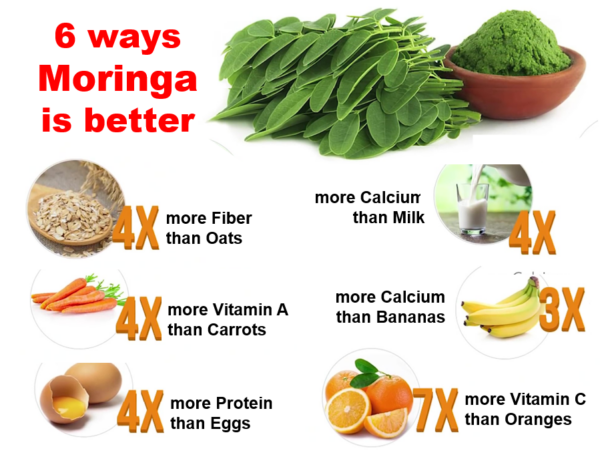
- The leaves, bark, flowers, fruit, seeds, and root of this tree are used to make medicine.
- Moringa contains proteins, vitamins, and minerals. As an anti-oxidant, it helps protect cells from damage.
- Moringa is used in India and Africa to fight malnutrition.
- Moringa is used for anemia; arthritis and other joint pain (rheumatism); asthma; cancer; constipation; diabetes; diarrhea; epilepsy; stomach pain; stomach and intestinal ulcers; intestinal spasms; headache; heart problems; high blood pressure; kidney stones; fluid retention; thyroid disorders; and bacterial, fungal, viral, and parasitic infections; to reduce swelling, increase libido, prevent pregnancy, boost the immune system, and increase breast milk production. It is also used as a nutritional supplement or tonic.
- Moringa can be applied directly to the skin as a germ-killer or drying agent (astringent). It is used topically for treating infection (abscesses), athlete’s foot, dandruff, gum disease (gingivitis), snakebites, warts, and wounds.
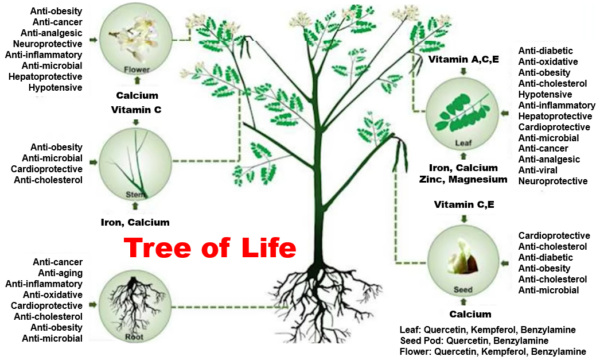
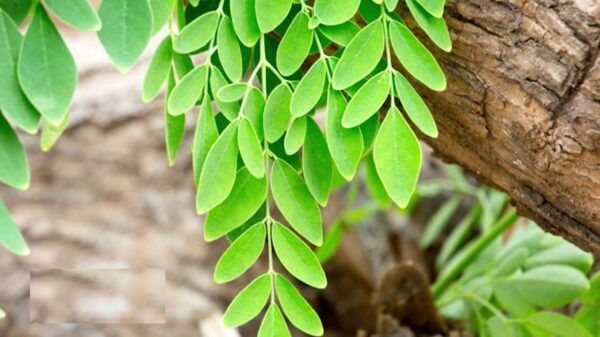
Propagation, Preparation, Storage
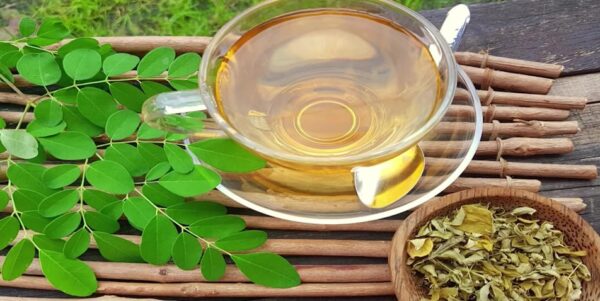
- Started from seed (in pots), Moringa can be grown cheaply and easily (don’t overwater!).
- Oil from moringa seeds is used in foods, perfume, and hair care products, and as a machine lubricant.
- The seed cake remaining after oil extraction is used as a fertilizer and also to purify well water and to remove salt from seawater.
- The leaves retain vitamins and minerals when dried (at EBG, we dry lots of leaves to provide a Winter supply for soups, salad, and tea).
- The immature green pods (drumsticks) are prepared similarly to green beans, while the seeds are removed from more mature pods and cooked like peas or roasted like nuts. The leaves are cooked and used like spinach, and they are also dried and powdered for use as a condiment.
- For a delicious green tea: Infuse fresh or dried leaves in boiling water for five to 10 minutes. Flavor with lemon or lemongrass.
2. Bitter Melon (Ampalaya)
3. Bok Choy (Pechay)
4. Chicago Hardy Figs
5. Cilantro
6. Garlic Chives
7. Green Onions
8. Hot Peppers
9. Jute (Saluyot)
10. Long Beans
11. Malabar Spinach (Alugbati)
12. Parsley
13. Longevity Spinach (Gynura Procumbens)
14. Purslane
15. River Spinach (Kangkong)
16. Romaine Lettuce
17. Spinach
18. Sweet Potato (orange/purple)
19. Turmeric
20. Yellow Cherry Tomato

